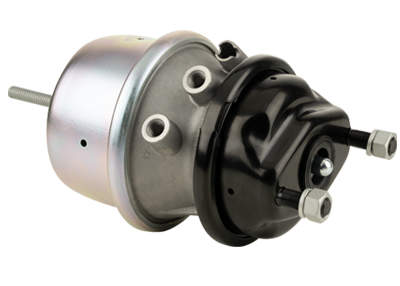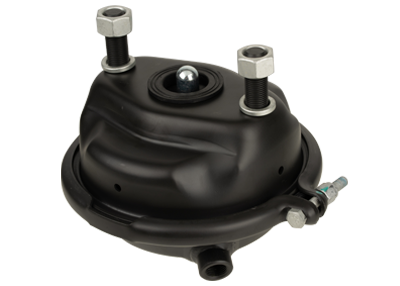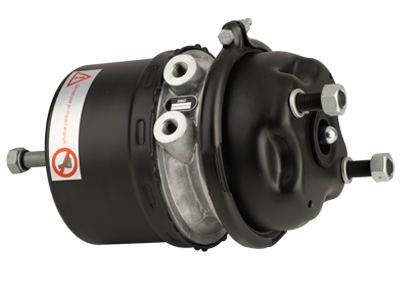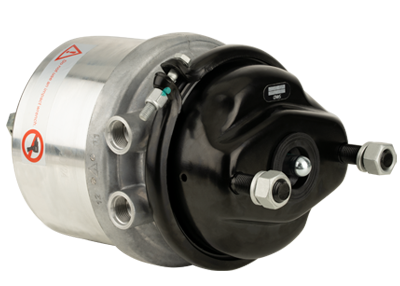First, it is relieved when the brake main pipe is inflated; when the compressed air in the brake main pipe is discharged (decompressed), it brakes, so it is called "decompression brake".
Decompression brake: When the train is separated or the front valve is pulled, because the compressed air of the brake main pipe is discharged to the atmosphere, the pressure suddenly drops, it can automatically produce an emergency braking effect, so that the train will stop immediately to prevent accidents. Occur or expand.
Second, this device does not directly use the compressed air of the master air cylinder to send into the brake cylinder during the braking process, but to send the air stored in the auxiliary air cylinder into the brake cylinder for braking, so it is called It is "indirect braking".
Indirect braking: the braking effect of the front and rear vehicles of the train will not be too different, so that the entire train can stop smoothly.
Empty and heavy vehicle adjustment device: When the empty and heavy vehicle shifting handle is placed in the empty position, a part of the compressed air enters the pressure-reducing air cylinder to generate a small braking force in the brake cylinder; when the shifting handle is placed in the heavy vehicle position , The pressure-reducing air cylinder does not work, the compressed air all enters the brake cylinder to produce a larger braking force.
Relief valve: In order to relieve the braking train, the relief valve on the auxiliary air cylinder can be pulled so that the compressed air in the auxiliary air cylinder is discharged through the relief valve. The air pressure in the auxiliary air cylinder is lower than the air pressure of the main train. The main piston of the three-way valve moves, and the slide valve moves with it, so that the air in the brake cylinder is discharged to the atmosphere, and the brake shoes leave the wheel to relieve.
Emergency brake valve: Each passenger car is equipped with an emergency brake valve, and trucks generally only install emergency brake valves on the caboose, also known as the captain valve.
During train operation, when an emergency situation that endangers driving and personal safety is found, the captain or flight attendant can pull the captain valve in accordance with the requirements of the "Railway Technical Management Regulations" to make the train stop by emergency braking.
Decompression brake: When the train is separated or the front valve is pulled, because the compressed air of the brake main pipe is discharged to the atmosphere, the pressure suddenly drops, it can automatically produce an emergency braking effect, so that the train will stop immediately to prevent accidents. Occur or expand.
Second, this device does not directly use the compressed air of the master air cylinder to send into the brake cylinder during the braking process, but to send the air stored in the auxiliary air cylinder into the brake cylinder for braking, so it is called It is "indirect braking".
Indirect braking: the braking effect of the front and rear vehicles of the train will not be too different, so that the entire train can stop smoothly.
Empty and heavy vehicle adjustment device: When the empty and heavy vehicle shifting handle is placed in the empty position, a part of the compressed air enters the pressure-reducing air cylinder to generate a small braking force in the brake cylinder; when the shifting handle is placed in the heavy vehicle position , The pressure-reducing air cylinder does not work, the compressed air all enters the brake cylinder to produce a larger braking force.
Relief valve: In order to relieve the braking train, the relief valve on the auxiliary air cylinder can be pulled so that the compressed air in the auxiliary air cylinder is discharged through the relief valve. The air pressure in the auxiliary air cylinder is lower than the air pressure of the main train. The main piston of the three-way valve moves, and the slide valve moves with it, so that the air in the brake cylinder is discharged to the atmosphere, and the brake shoes leave the wheel to relieve.
Emergency brake valve: Each passenger car is equipped with an emergency brake valve, and trucks generally only install emergency brake valves on the caboose, also known as the captain valve.
During train operation, when an emergency situation that endangers driving and personal safety is found, the captain or flight attendant can pull the captain valve in accordance with the requirements of the "Railway Technical Management Regulations" to make the train stop by emergency braking.








 英语
英语 中文简体
中文简体 德语
德语 俄语
俄语 西班牙语
西班牙语 法语
法语
